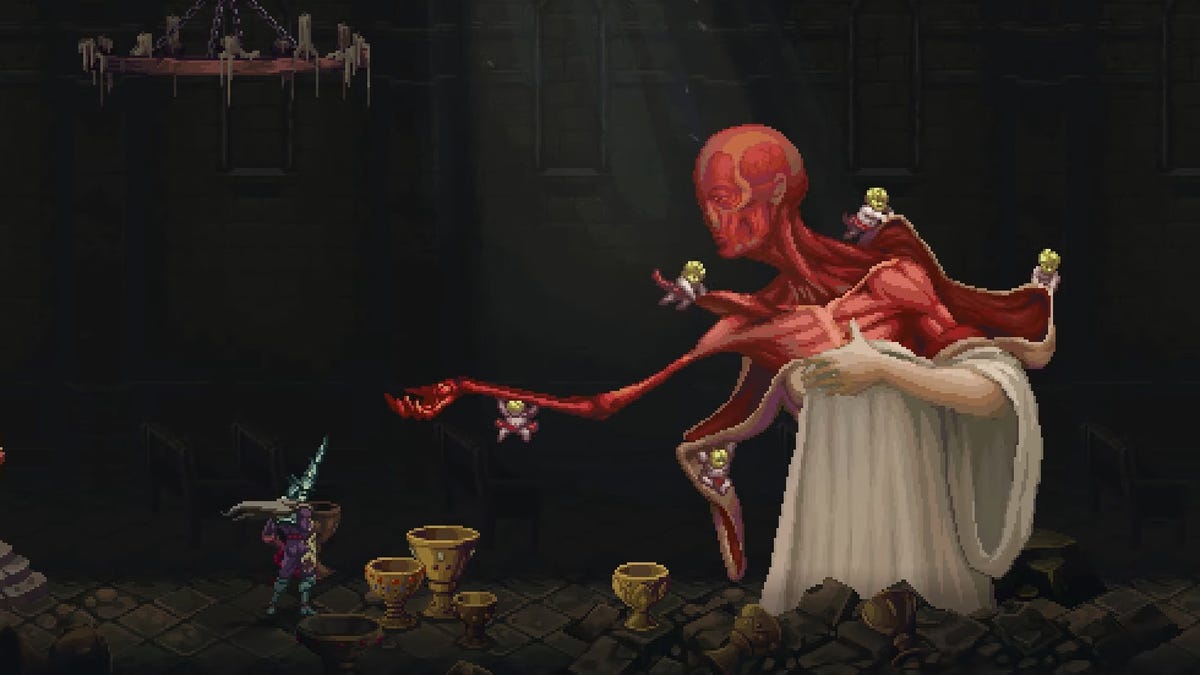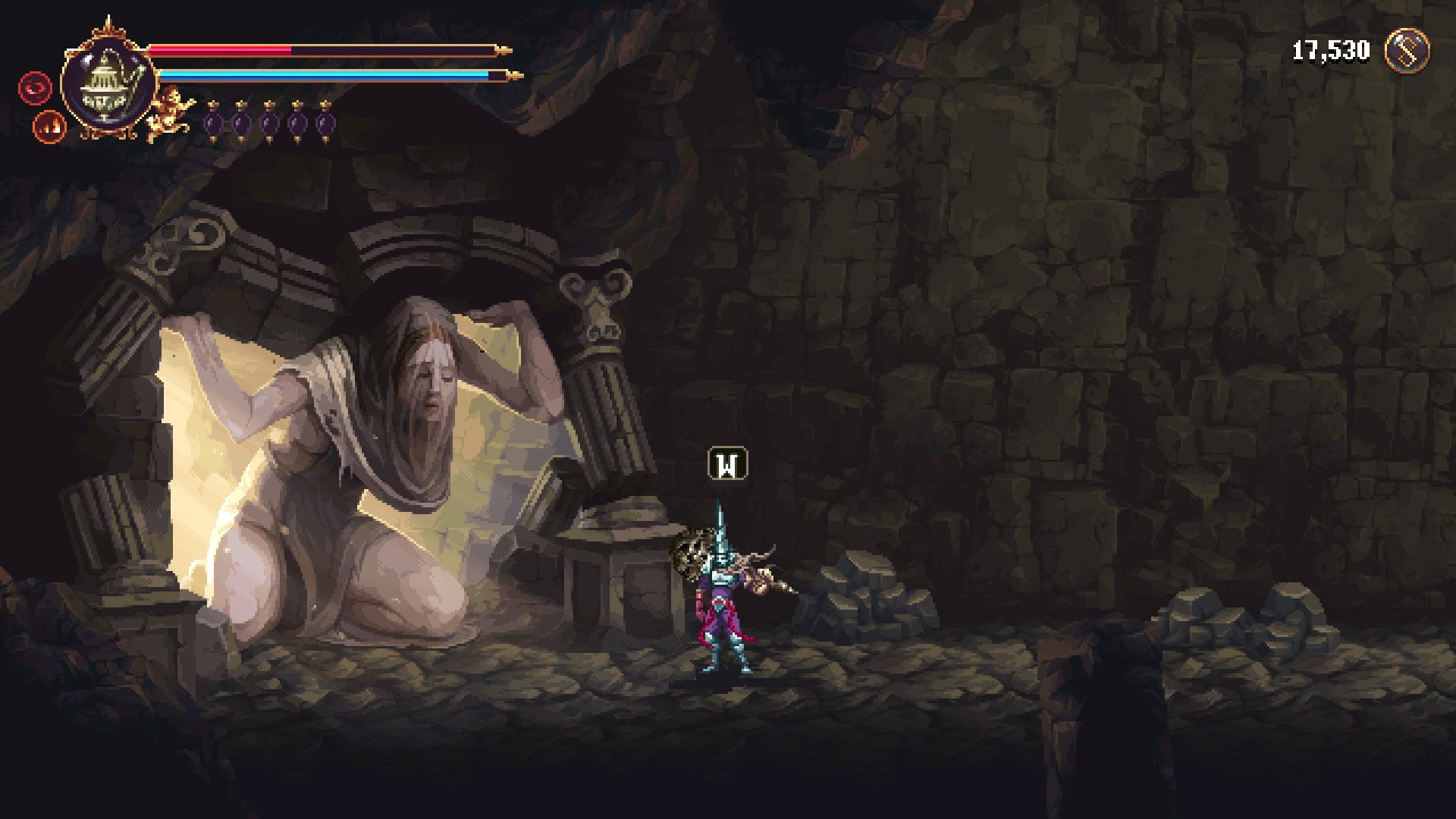 Few games capture a sense of somber beauty and punishing gameplay like Blasphemous 2. Building on its predecessor’s unique fusion of gothic art and brutal combat, the sequel brings players back into the heart of Custodia’s haunting landscapes. It combines high-stakes platforming, intricate combat, and rich lore, making it a captivating entry for fans of the action-platformer genre. But while it succeeds in pushing the series forward, some minor flaws have surfaced, leaving certain aspects open to criticism. Here, we delve into the game’s strengths, its challenges, and feedback from early players to provide a balanced look at this dark journey. Author of the review : Kour-io.com
Few games capture a sense of somber beauty and punishing gameplay like Blasphemous 2. Building on its predecessor’s unique fusion of gothic art and brutal combat, the sequel brings players back into the heart of Custodia’s haunting landscapes. It combines high-stakes platforming, intricate combat, and rich lore, making it a captivating entry for fans of the action-platformer genre. But while it succeeds in pushing the series forward, some minor flaws have surfaced, leaving certain aspects open to criticism. Here, we delve into the game’s strengths, its challenges, and feedback from early players to provide a balanced look at this dark journey. Author of the review : Kour-io.com
Art and Atmosphere: Gothic Mastery
One of the standout features of this sequel is its richly detailed, gothic-inspired world. Each environment drips with atmosphere, carefully crafted with dark, haunting visuals that lend an immersive quality to Custodia’s harrowing landscapes. Hand-drawn pixel art has become synonymous with the series, and here, it’s more refined than ever. Intricate details in both foreground and background elements make the world feel alive and oppressively beautiful, almost as if each corner hides a story of its own.
The character designs are equally impressive, with monstrous creatures and unsettling NPCs that reflect the game’s themes of penitence, sacrifice, and redemption. This art style has been a hit with fans, who feel it complements the grim tone perfectly. Some players, however, mention that while the aesthetic is compelling, the sometimes monochromatic palette can make it difficult to distinguish certain elements, especially in dimly lit areas. This might hinder players’ awareness of hidden traps or vital platforms, occasionally impacting the flow of exploration. Nevertheless, the atmosphere remains a masterpiece in dark artistry, capturing a world that feels as if it were pulled from a medieval tapestry.
Gameplay and Combat: Precision and Punishment
At its core, Blasphemous 2 delivers a well-crafted, fast-paced combat experience that rewards skillful play and calculated timing. Armed with an array of unique weapons, each with distinct abilities and upgrade paths, players can tailor their approach to match their playstyle. The weapons feel weighty and satisfying, each one encouraging experimentation in how to approach different foes. Whether wielding a heavy weapon for slow but powerful strikes or opting for a faster, more agile setup, players must learn enemy patterns, dodge skillfully, and strike at the right moment.
The level of difficulty is steep, yet fair, a hallmark of this series. Most players agree that while challenging, the game’s combat rarely feels unfair, providing a rewarding sense of accomplishment after each battle. That said, some criticism arises from the game’s learning curve. Newcomers to the series may find the lack of a gradual difficulty ramp somewhat discouraging, with some bosses presenting formidable obstacles early on. While veterans of challenging platformers will likely relish the combat’s intensity, less experienced players may struggle to adjust.
Exploration and Level Design: Expansive but Occasionally Confusing
The game’s non-linear structure allows players to explore Custodia at their own pace, discovering secrets and unraveling lore as they progress. This open-ended design invites players to return to previously explored areas with newfound abilities, uncovering hidden rooms, items, and NPCs that contribute to the depth of the narrative. Level design has clearly been approached with care, featuring intricate pathways and shortcuts that encourage exploration and reward curiosity.
Yet, while the layout and interconnectedness of the levels are generally praised, some players mention occasional issues with the lack of direction, which can lead to moments of disorientation. Unlike other games that offer more hints or a guided path, Blasphemous 2 leaves players largely to their own devices, and while this adds to the feeling of immersion and challenge, it may lead to moments of frustration for those accustomed to more structured guidance. Some fans have suggested that a subtle improvement in the mapping system, perhaps with clearer markers, could help alleviate this issue without detracting from the game’s sense of discovery.
Story and Narrative Depth: A Dark and Thoughtful Tale
Narrative is an essential part of this sequel’s identity, and the developers have crafted a story filled with religious symbolism, dark lore, and mysterious figures. Themes of sin, punishment, and redemption permeate every aspect of the game, and the story unfolds through both dialogue and visual storytelling. The cryptic nature of the plot mirrors the original, requiring players to piece together clues through environmental storytelling, cryptic NPC dialogue, and fragmented lore.
However, player opinions on the story’s accessibility are mixed. While the cryptic storytelling style appeals to fans who enjoy delving into lore and connecting subtle details, others may find it difficult to grasp the plot’s full depth without external guides or previous knowledge of the series. The lack of a more straightforward narrative has led some to feel slightly disconnected from the story, especially if they are unfamiliar with the previous game. Nonetheless, for those who take the time to dig into its intricacies, the story provides a rich, darkly poetic experience that matches the tone and atmosphere of Custodia beautifully.
Audio and Soundtrack: Haunting and Atmospheric
The audio design is another highlight, with a soundtrack that complements the dark tone of the game and enhances its oppressive atmosphere. Melancholic and haunting, the music captures the sense of a tragic, corrupted world. Each track feels meticulously composed, with arrangements that shift based on location and encounters, creating an eerie backdrop that adds to the sense of foreboding.
Sound effects are equally well-executed, with each swing of a weapon, every footfall, and every grotesque sound adding to the immersion. The voice acting, though sparing, is haunting, with whispered voices and unsettling lines that echo the game’s religious themes. User feedback on the audio experience has been overwhelmingly positive, with many players praising the soundtrack’s ability to amplify the game’s atmosphere. While some might find the soundtrack to be overly somber at times, it’s hard to deny its effectiveness in setting the tone for a world as dark and introspective as Custodia.
Replayability and Longevity: A Compelling but Finite Experience
For those who love to explore every corner of a game, this title offers numerous side quests, hidden items, and multiple endings that make for a rewarding replay experience. Dedicated players can delve deep into the game’s lore, uncovering new details with each playthrough and experimenting with different weapons and upgrade paths. The multiple endings also encourage exploration, as players must make specific choices to unlock alternate conclusions.
However, some players mention that despite its content-rich world, the game’s length may feel somewhat shorter than expected, particularly for those who approach the main storyline without extensive exploration. While the inclusion of side quests and secrets adds to its depth, players who focus solely on the primary objectives may find themselves reaching the end sooner than anticipated. Still, the challenge, coupled with the exploration of lore, ensures that many players return for a second or even third journey through Custodia.
Final Thoughts: A Gripping Sequel with Minor Shortcomings
In the end, Blasphemous 2 achieves what it set out to do: it offers a visually stunning, atmospherically rich, and challenging experience that builds on the success of the first game. Its gothic art style, tight combat mechanics, and expansive exploration make it a standout title within the action-platformer genre. Though minor issues—such as a steep learning curve, occasional directional confusion, and cryptic storytelling—may affect some players’ enjoyment, they don’t significantly detract from the overall experience.
For fans of dark, lore-heavy games with challenging combat, this sequel is a must-play that enhances the best elements of the original while introducing new dimensions to explore. Its shortcomings, while noticeable, are often overshadowed by the captivating journey it provides through the eerie, tortured world of Custodia. Whether returning to this universe or exploring it for the first time, players will find themselves captivated by a world that blends brutality and beauty in equal measure.
Published by